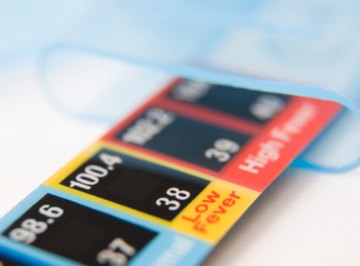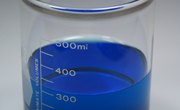
Everyone has a sense of the difference between "hot" and "cold," at least on a relative scale like temperature. If you put a liter of water that has been sitting on the counter at room temperature into a normally functioning refrigerator, it will become colder. If you instead place it in a microwave oven set to high for three minutes, it will become warmer.
Because "hot" and "cold" are subjective terms, and can mean different things to different people at different times, an objective scale is needed for scientists and others to precisely describe "hotness" and "coldness" on a numerical scale. That scale is of course temperature, the most common units of which worldwide are kelvin (K), degrees Celsius (°C) and degrees Fahrenheit (°F).
Temperature in turn is not a measurement of "heat," which has units of energy and is a transferable quantity in physical science. Temperature is a measure of the average kinetic energy of molecules in matter; the movement of these molecules generates heat. If you're still confused, no worries. You're just getting warmed up!
What Is Heat and Where Does It Come From?
Heat can be envisioned as the total amount of energy resulting from the molecular motion of a substance. Heat can be envisioned as "flowing" from places where there is a lot of it to places where there is relatively little, just as water flows downhill under the influence of gravity and molecules tend to move from areas of higher concentration (particle density) to areas of lower concentration.
Heat is usually given in joules (J), the SI, or international system, unit of energy. This is equal to 4.18 calories (cal), the amount of heat required to raise the temperature of 1 gram (1 g) of water (H2O) by 1 degree Celsius (°C). (The "calorie" on food labels is actually a kilocalorie (kcal), or 1,000 cal.
Heating matter causes particles in that matter to speed up; cooling matter causes the particles to slow down. Eventually, this leads not only to more (or less) heat and higher (or lower) temperatures, but phase changes, which you'll read about shortly.
Particle Movement Definitions
Temperature is a theoretically limitless quantity at the high end, but its value can be no lower than 0 K, which is equal to a temperature known as absolute zero. Negative values are impossible because molecules and atoms can not have "negative movement." They can merely stop vibrating altogether and liberate no heat as a consequence.
The average kinetic energy of molecules in a sample, be it solid, liquid or gas, is used to establish temperature because this value is stable at a given temperature.
The individual kinetic energy value of a given molecule will vary over time, especially at high temperatures. Since millions of particles are typically being assessed, the mean of these energy values stays the same if experimental conditions are not perturbed (i.e., for a gas, pressure, volume and the number of particles in the sample).
States of Matter, Heat and Temperature
States or phases of matter correspond to the kinetic energy of the molecules in a substance.
Matter in the solid state has "colder molecules" than the same substance heated sufficiently to melt it, or cause it to become liquid. (Liquid becoming solid because it cools and loses heat is called freezing.) Liquid assumes the shape of its container while maintaining its volume, so molecules can slide past one another, but very few can "escape" into the ambient atmosphere.
Matter in the gas or gaseous state has its highest kinetic energy and the "hottest" particles in its phases of existence. Individual particles are not contiguous and instead can bounce off each other and the walls of the container, which a gas readily fills, with its particles evenly distributed throughout the container but still in motion.
References
About the Author
Kevin Beck holds a bachelor's degree in physics with minors in math and chemistry from the University of Vermont. Formerly with ScienceBlogs.com and the editor of "Run Strong," he has written for Runner's World, Men's Fitness, Competitor, and a variety of other publications. More about Kevin and links to his professional work can be found at www.kemibe.com.
Photo Credits
BananaStock/BananaStock/Getty Images
